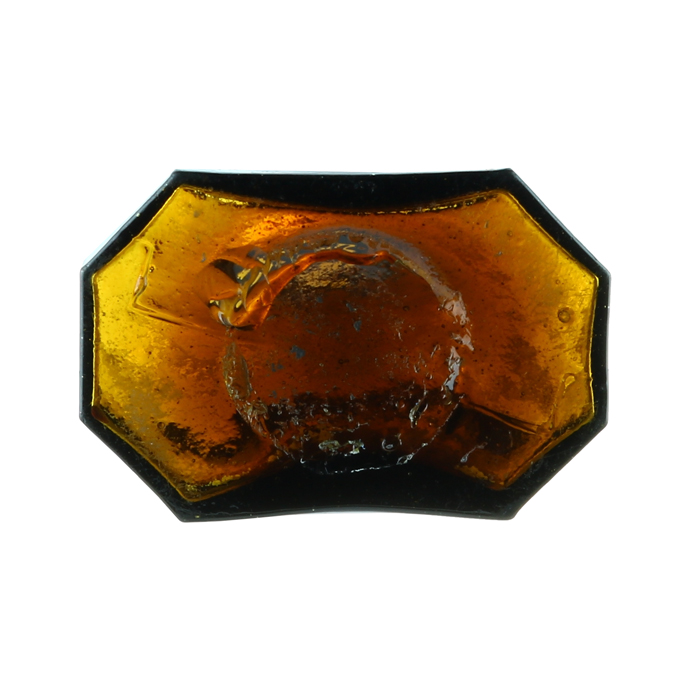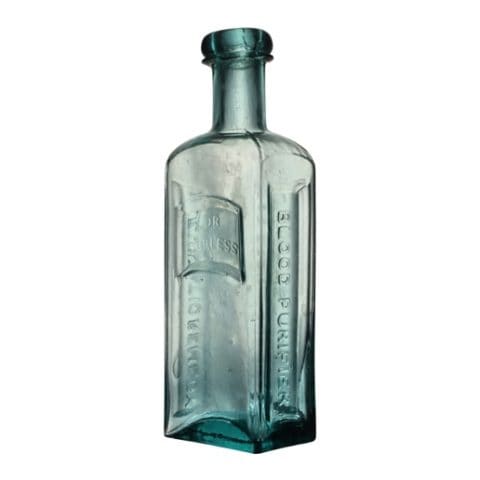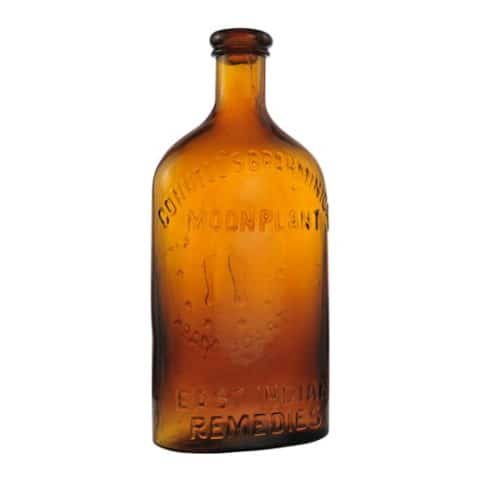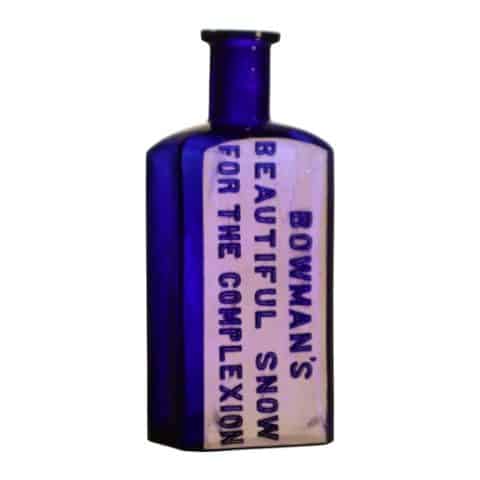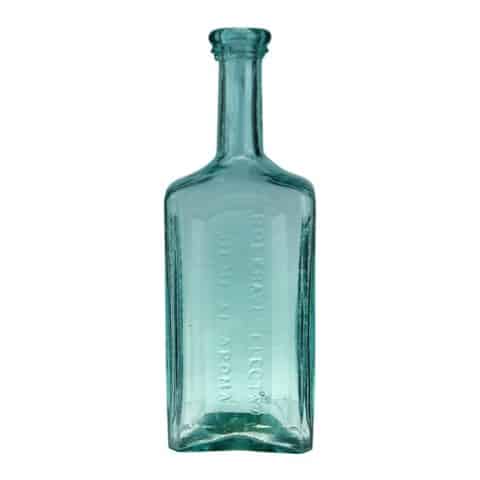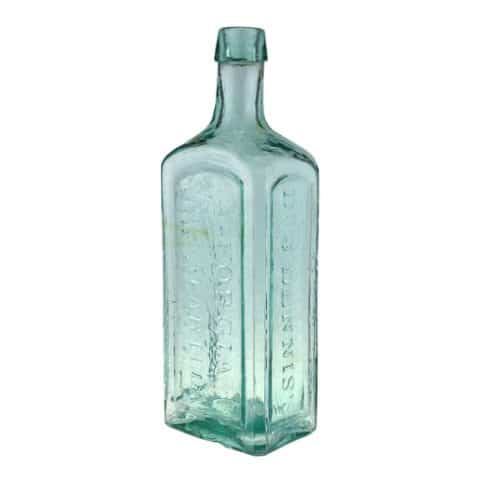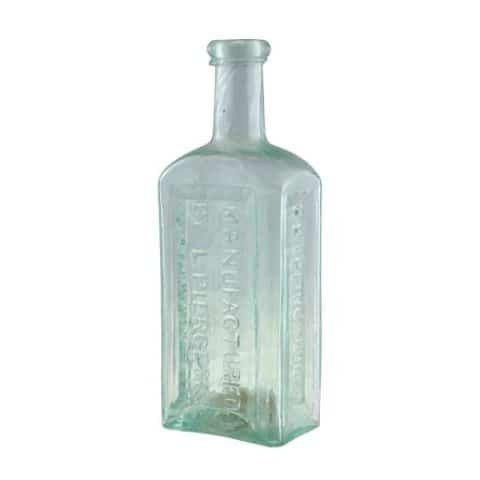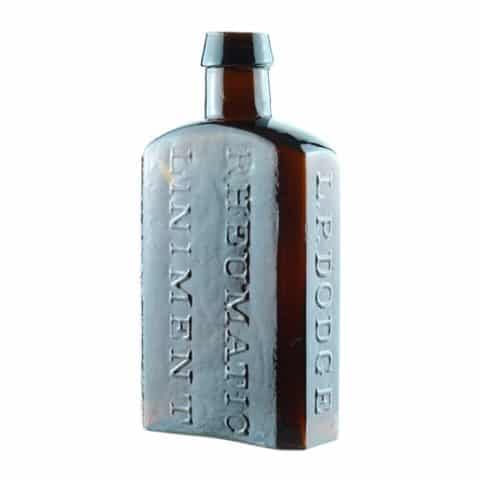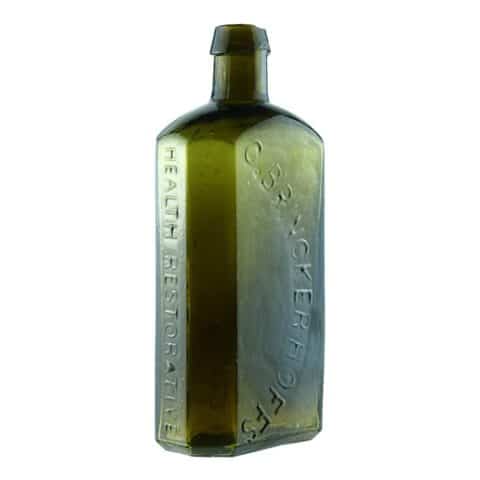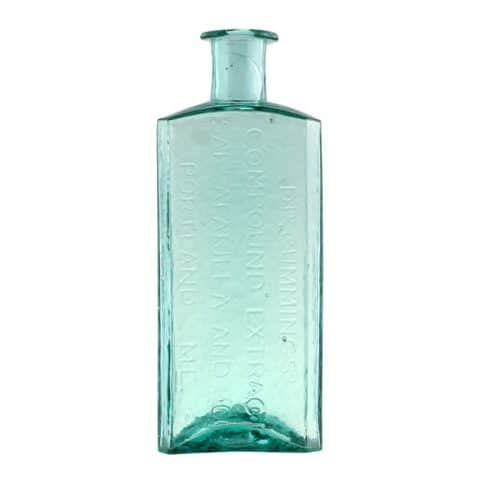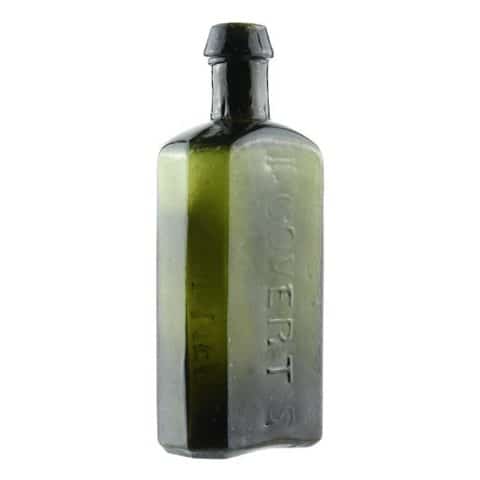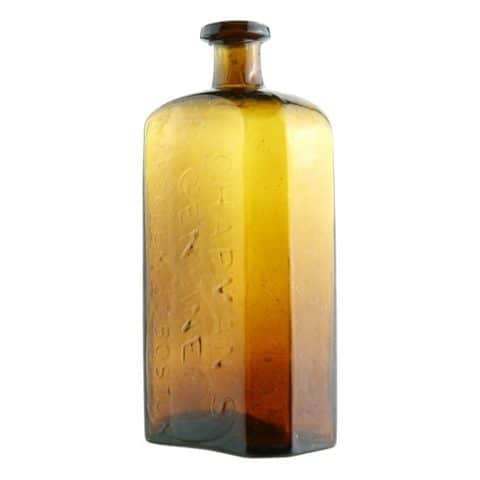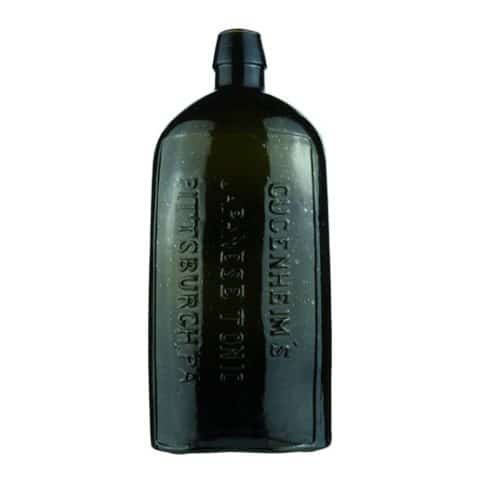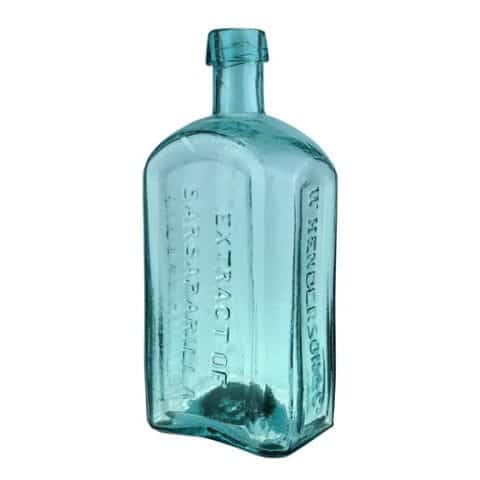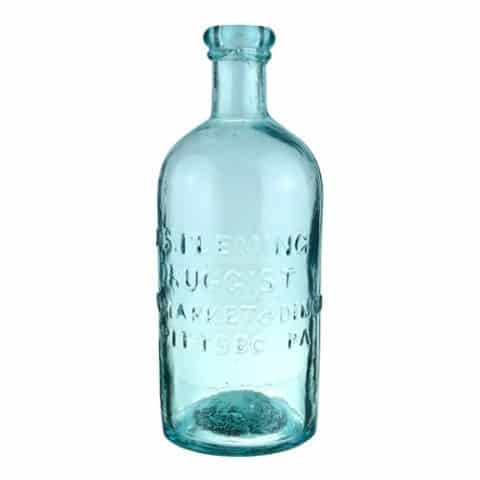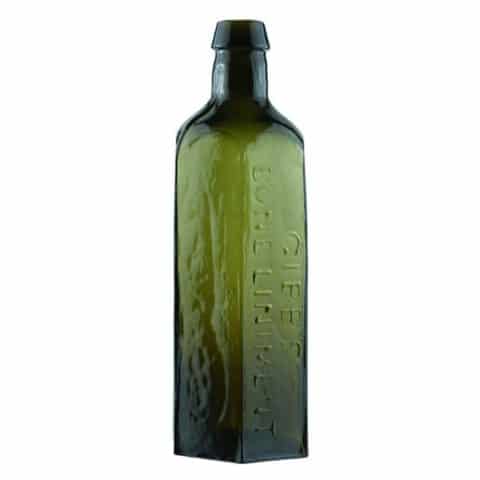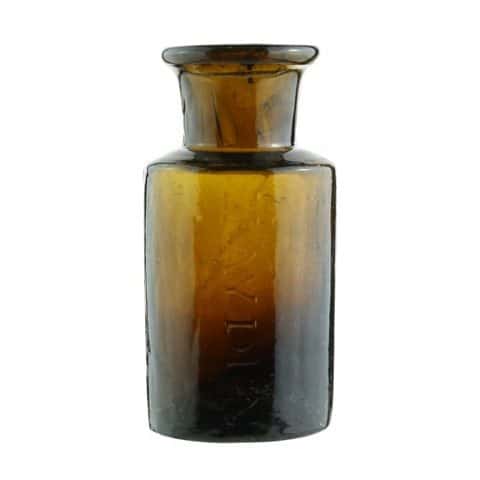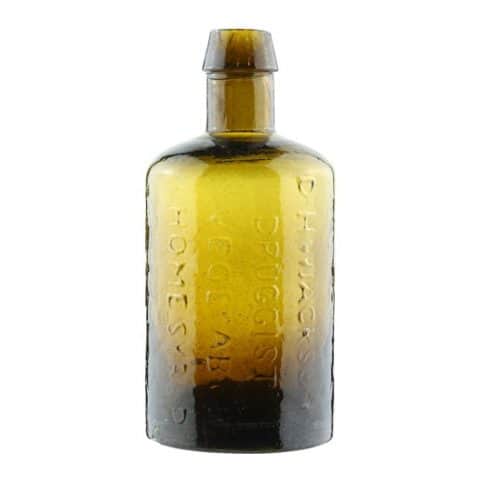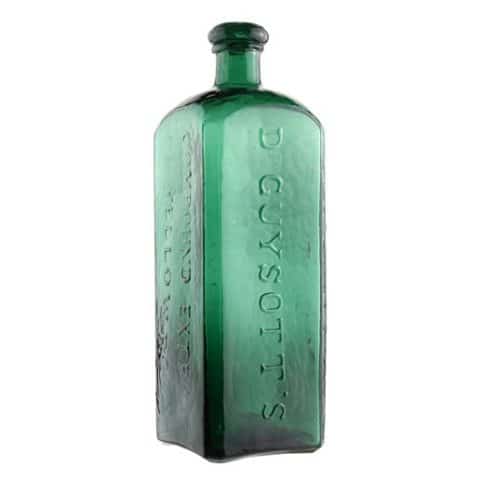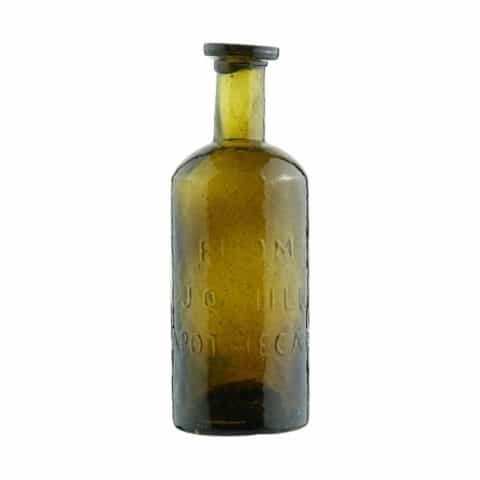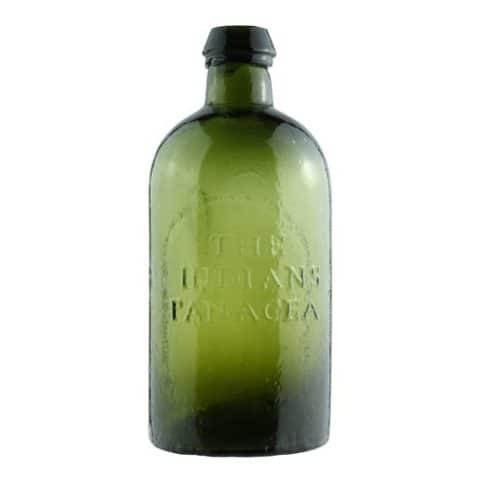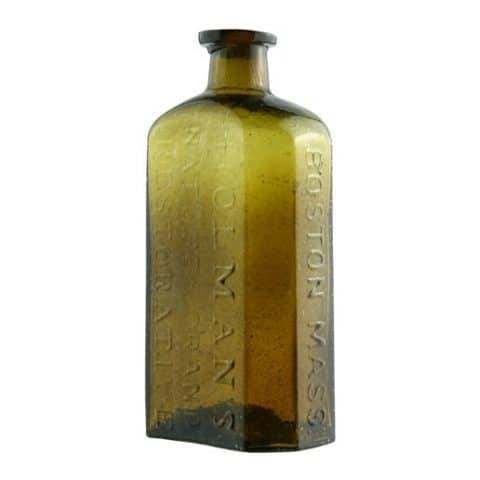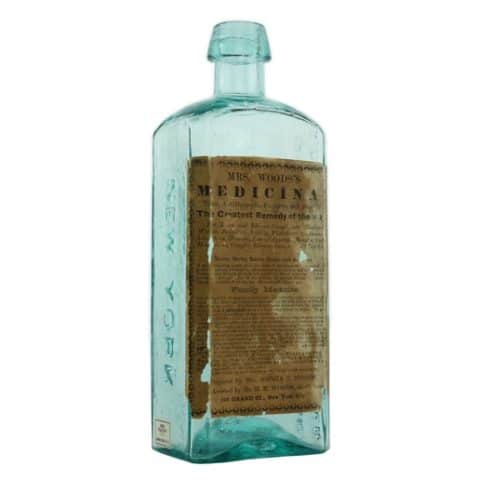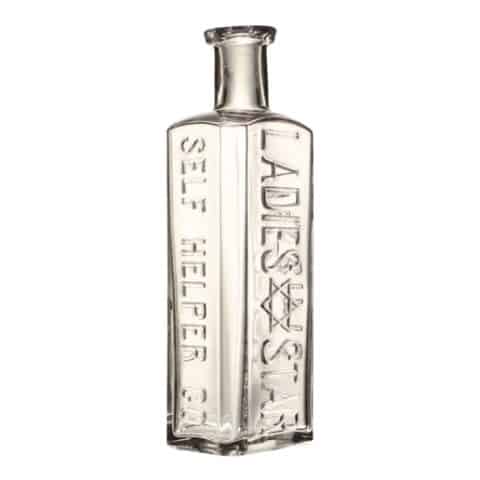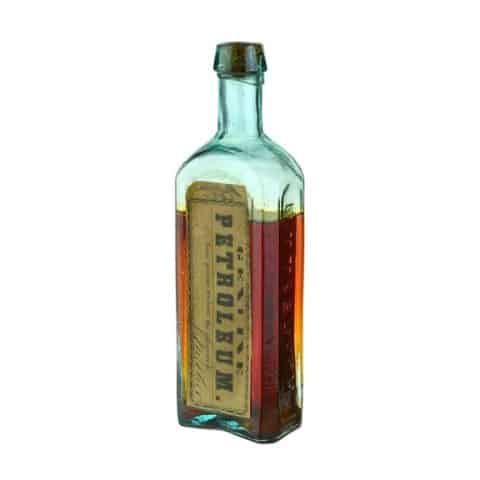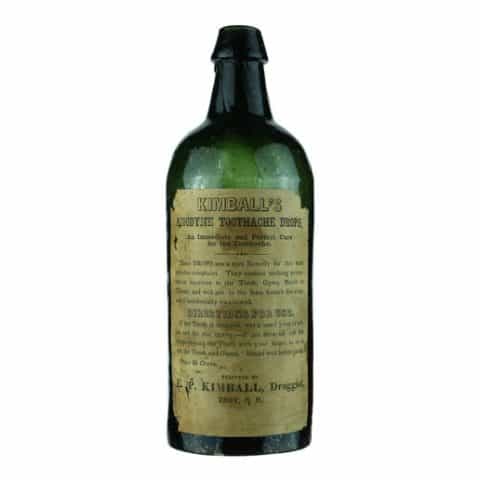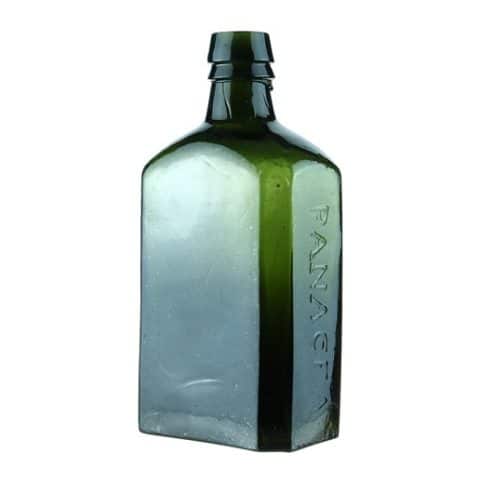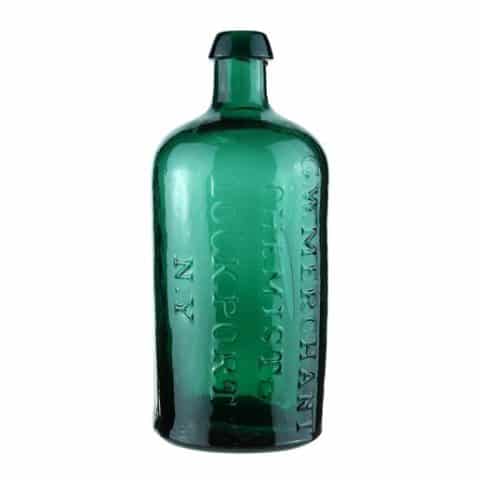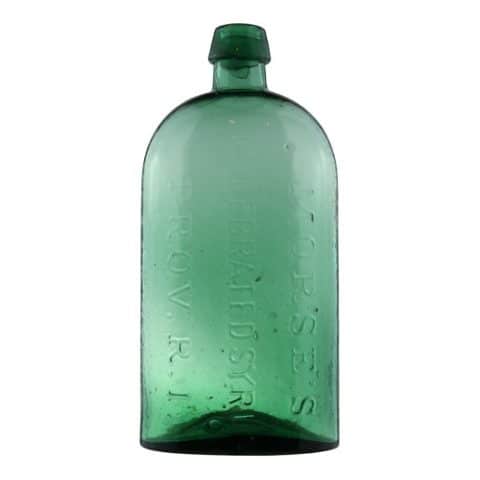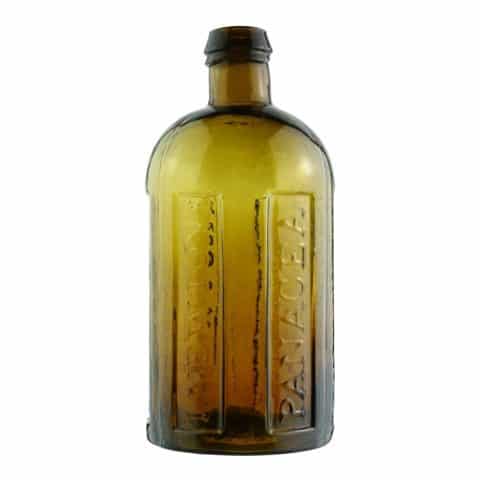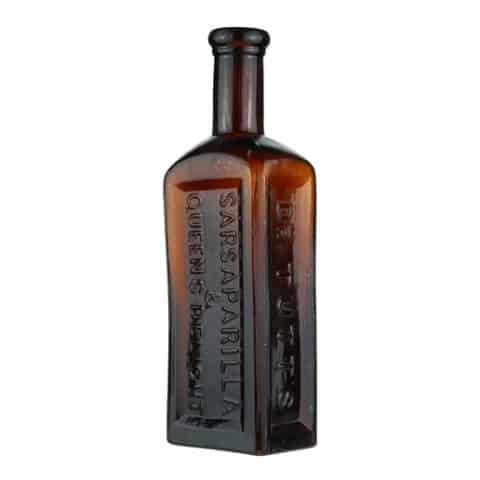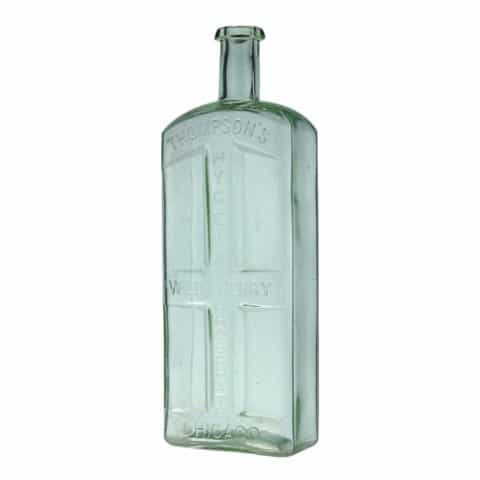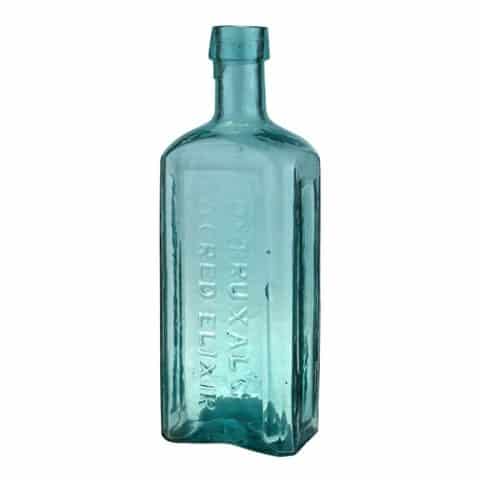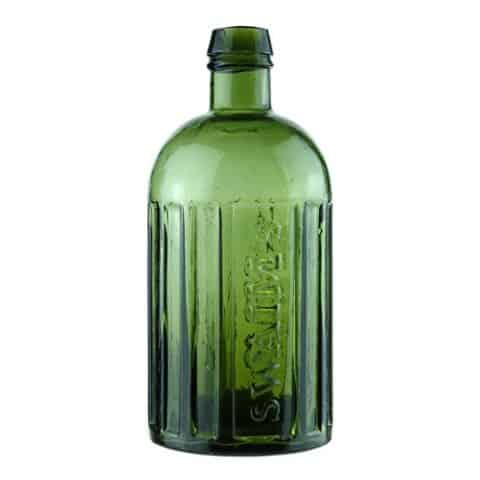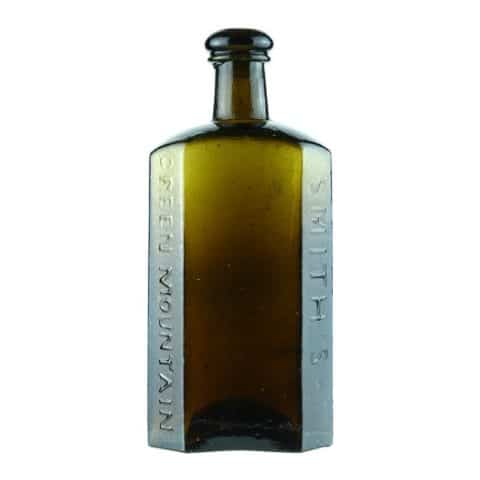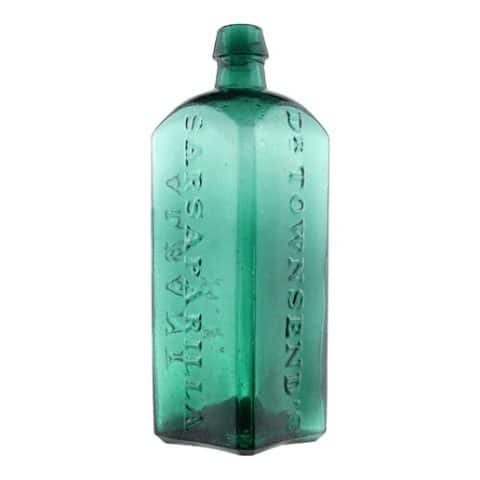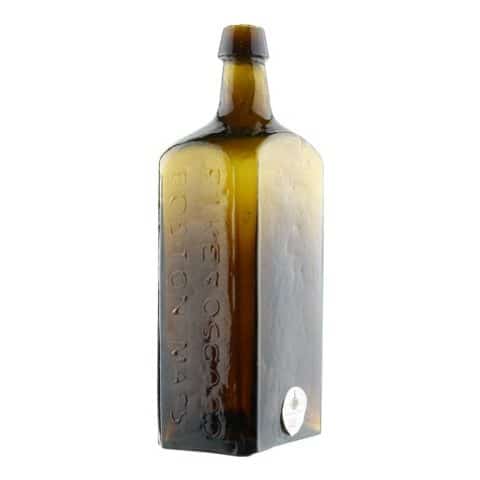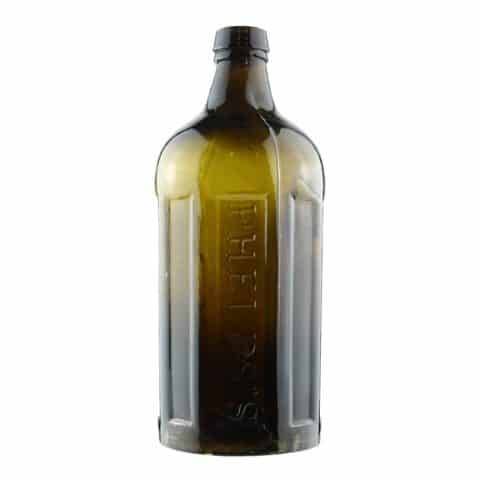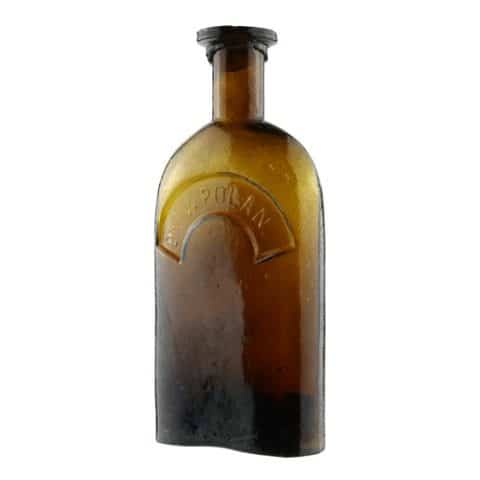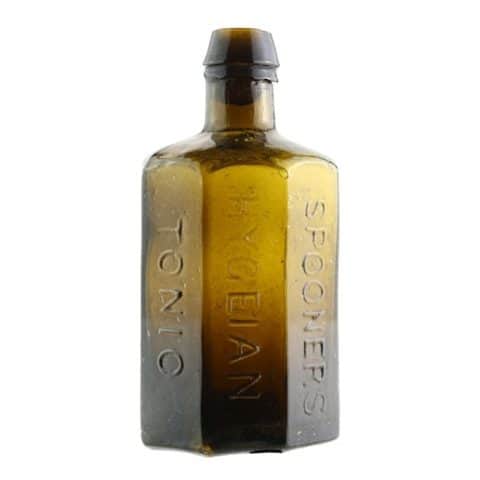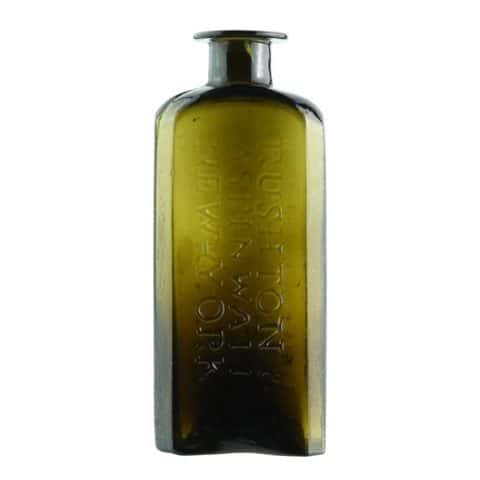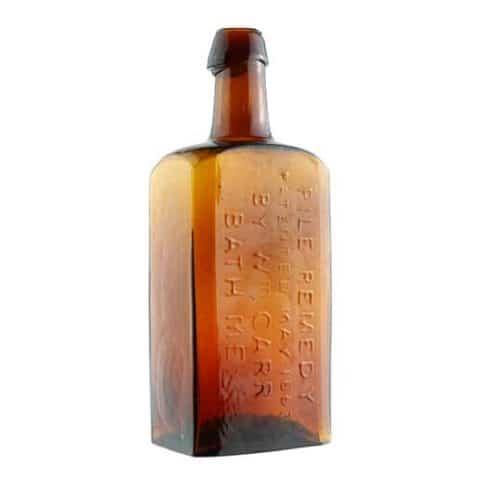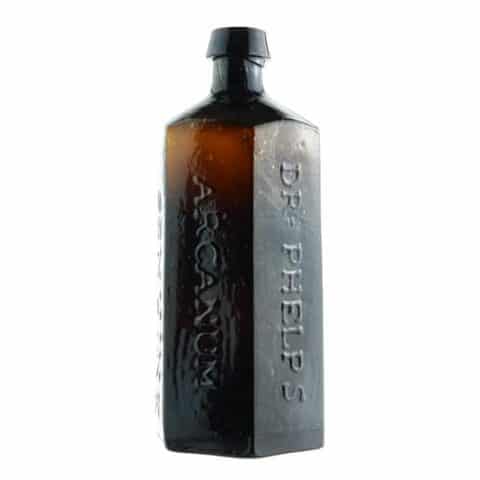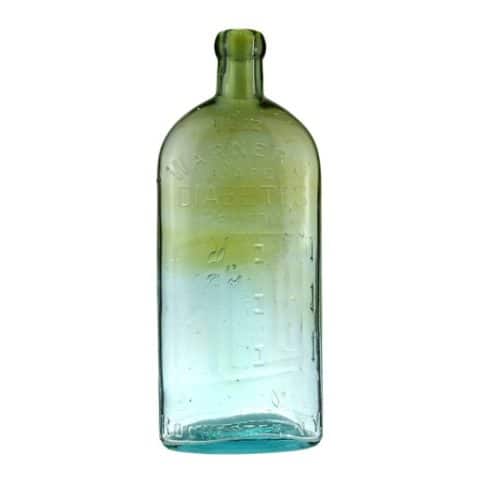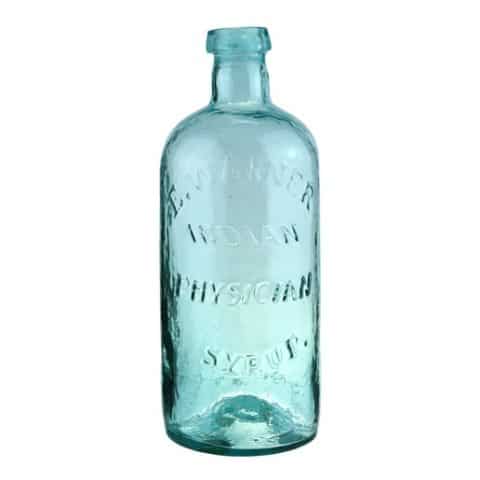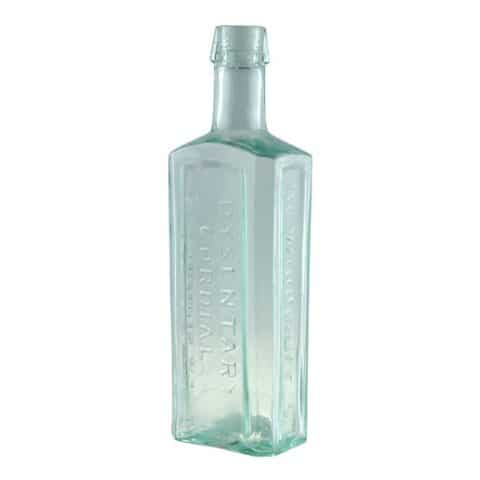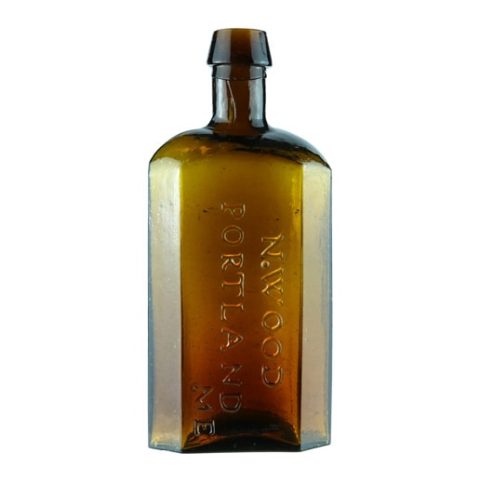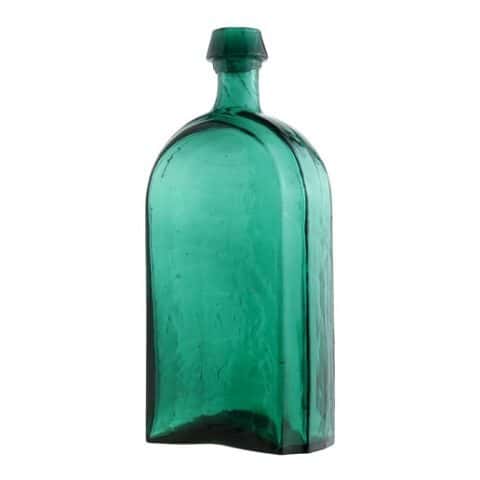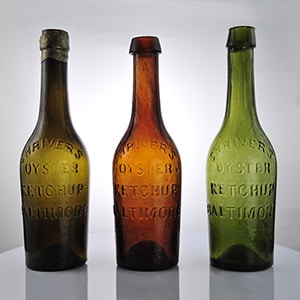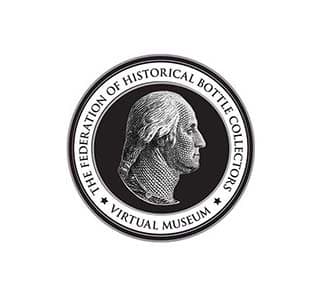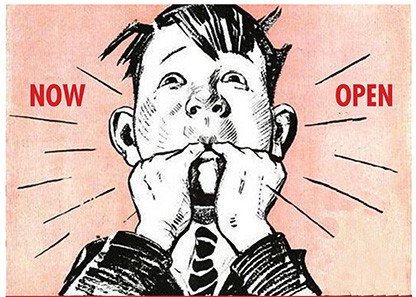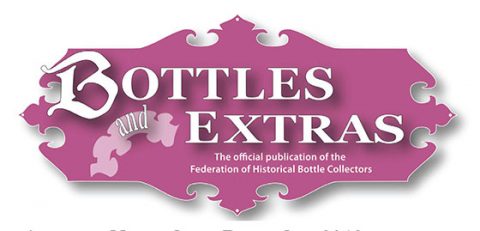N. Wood Portland Me
N. Wood
Portland Me
Nathan Wood, Portland, Maine
Amber Medicine
Provenance: Chris Bubash Collection
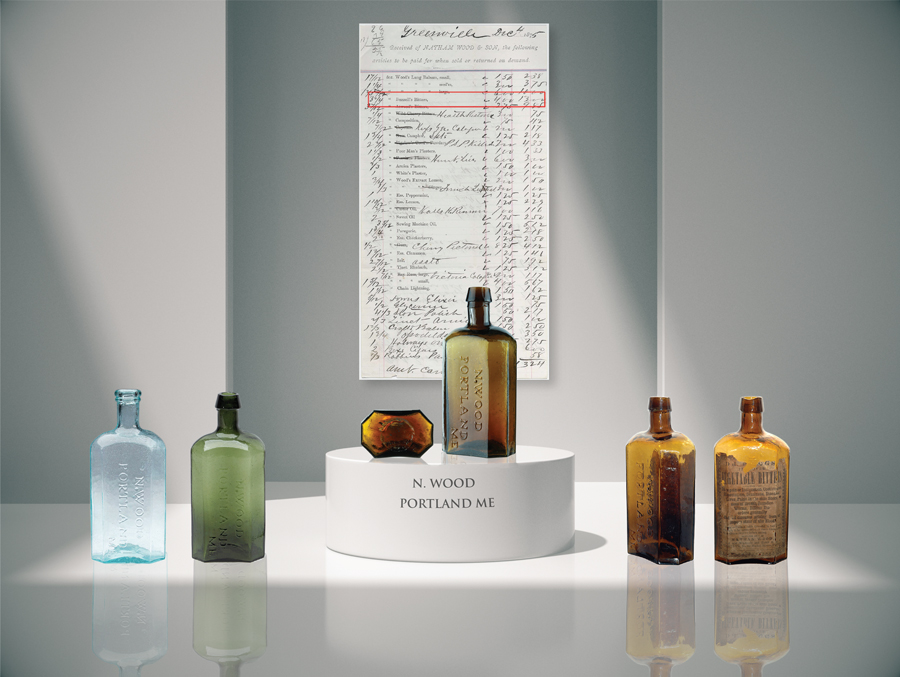
Our 7 1/4 inch tall, amber “N. Wood Portland ME” medicine bottle could have been made at a Stoddard glasshouse in Stoddard, New Hampshire, from 1843 to 1860. The bottle is rectangular with wide beveled corners creating wide and thin arched vertical panels. There is a tall, slightly bent neck terminating with an applied, very sloppy, sloping collared mouth. The bottle is in outstanding condition and has a pontil scar.
A labeled example in the museum reflects that a bitter’s product was contained within the bottle. Over time, Nathan Wood would put several different bitters and medicines in his embossed bottle as he was a druggist and proprietary medicine man.
When looking at the embossed face of the bottle, the thin serifed copy occurs in three vertical, shoulder-to-base lines. ‘N. WOOD’ is on the first line. ‘PORTLAND’ is on the second, and ‘ME’ is on the third line, flush right to the corner of the bottle.
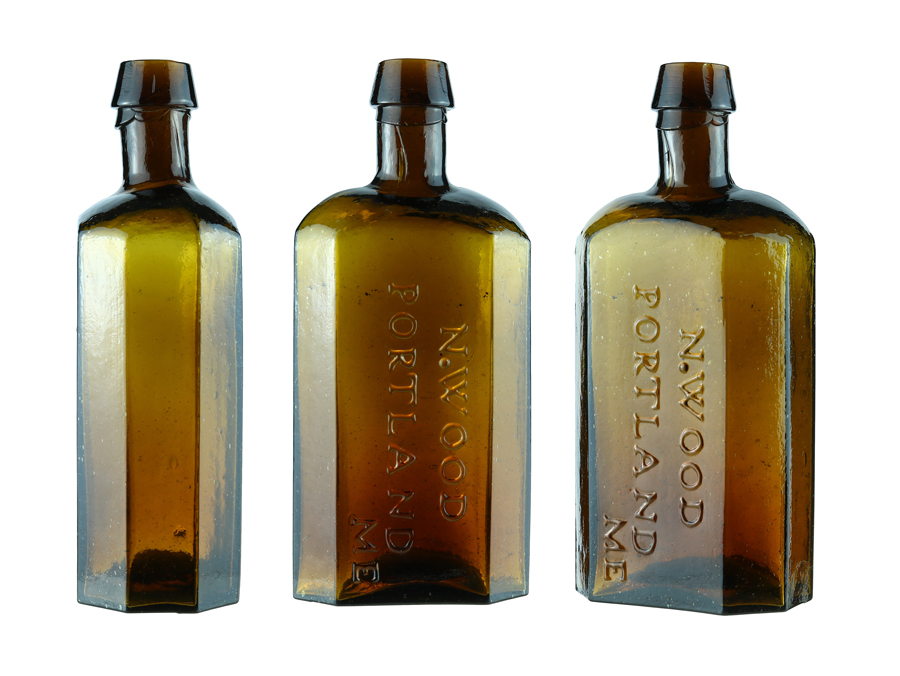
Nathan Wood went into business following the lead of James M. Buzzell, who was born around 1812 and was the son of Reverend John Buzzell (1767-1863). You can find newspaper advertisements for John D. Buzzell’s Family Medicines around 1844. James came from a family of doctors and was one of three brothers, Luke, Alvah, and James Buzzell, to enter the medical profession. James started his medical career in 1836 and was an eclectic physician and surgeon. The Eclectic movement was a 19th-century botanical branch of American medicine that operated from 1825 through 1939. The Eclectics spent more than 114 years studying North American medicinal plants for use in botanical remedies and other substances and physical therapy practices.
James Buzzell was also the proprietor of Buzzell’s Vegetable Tonic Bitters (B 279 L). He must have picked up the recipe from his father, John before Reverend Buzzell found his calling as a man of God. James was also the proprietor of several other tonic medicines, including vegetable blood cordial and a remedy for dyspepsia. You could obtain these yourself from Dr. Buzzell at his office at the corner of Pearl and Federal Streets in Portland, Maine, where he was seeing patients during office hours.
The Buzzell family knew Nathan Wood in Portland, Maine, as Wood would eventually become an agent for their medicines. Nathan was born on July 14, 1812, in Concord, Middlesex County, Massachusetts. Later advertisements stated that he started as a druggist in 1843 and quickly followed by representing and manufacturing his and others’ proprietary medicines. His wife was Esther M. (Ward) Wood, and his children were John Tyler Wood and Nathan Henry Wood.
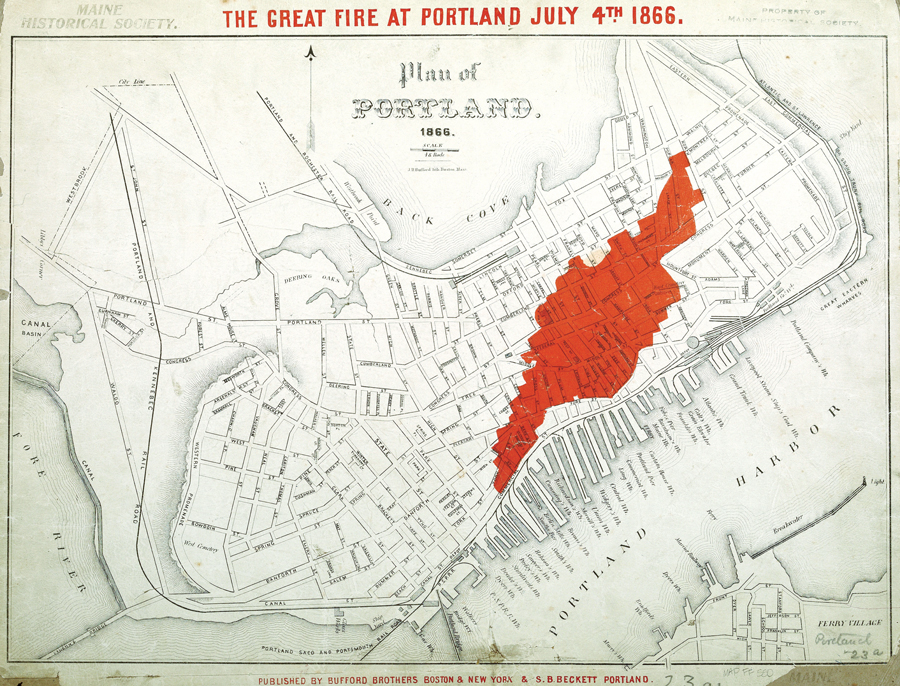
There was a great fire in Portland in 1866, and Nathan Wood would rebuild the “brick block on Fore street” where he previously operated. This fire, sometimes known as the 1866 great fire of Portland, occurred on July 4, 1866—the first Independence Day after the end of the American Civil War. This was five years before the Great Chicago Fire, the greatest fire yet seen in an American city. The Portland fire started in a boat house on Commercial Street, likely caused by a firecracker or cigar ash. The fire spread to a lumber yard and onto a sugar house, then spread across the city, eventually burning out on Munjoy Hill in the city’s east end. Two people died, ten thousand people were made homeless, and 1,800 buildings were burned to the ground. Soon after the fire, poet Henry Wadsworth Longfellow described his old hometown: “Desolation! Desolation! Desolation! It reminds me of Pompeii, the ‘sepult city.‘”
The company remained in business as Nathan Wood & Son until 1913. Over the years, many druggists and medicine bottles would be produced with the “N. Wood” name.
Nathan Wood would commit suicide by hanging on May 11, 1889. Six months prior, he was hit on the head by a falling board while passing a new building. This led to failing health and, at times, delirium. It is supposed that he had one of those attacks at the time of his death.
Primary Image: “N. Wood Portland Me” bottle imaged on location by Alan DeMaison, FOHBC Virtual Museum Midwest Studio
Support: Reference to Bitters Bottles by Carlyn Ring and W. C. Ham.
Support: Reference to So who is Dr. Buzzell? PeachridgeGlass.com, 08 November 2014.
Support Images: Auction Lot 122: “N. Wood / Portland / ME” Medicine Bottle, probably a Stoddard glasshouse, Stoddard, New Hampshire, 1846-1860. Rectangular with wide beveled corners, medium forest green, applied sloping collared mouth – pontil scar, ht. 7 1/4 inches. Similar to PME pg. 380 A scarce New England medicine bottle in an extremely rare and beautiful color. Fine condition. John April collection. – Norman Heckler Jr. & Sr., Norman C. Heckler & Company, Auction #104
Support Image: Auction Lot 165: “N. Wood / Portland / ME” Medicine Bottle, America, 1840-1860. Rectangular with wide beveled corners, aquamarine, applied double collared mouth – tubular pontil scar, ht. 7 1/4 inches; (light patchy interior haze). AAM pg. 579 A crisp, clean example with bold embossing. Fine condition. – Norman Heckler Jr. & Sr., Norman C. Heckler & Company, Auction #189
Join the FOHBC: The Virtual Museum is a project of the Federation of Historical Bottle Collectors (FOHBC). To become a member.

